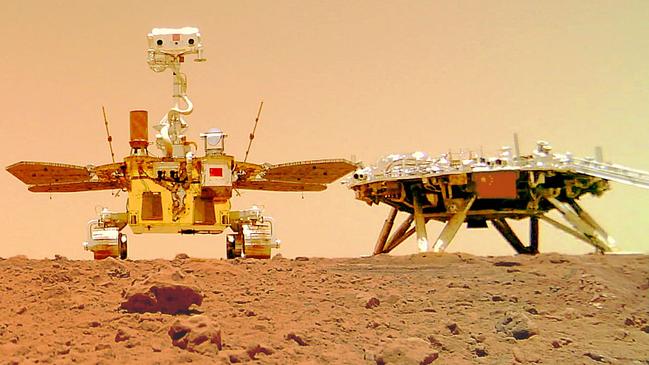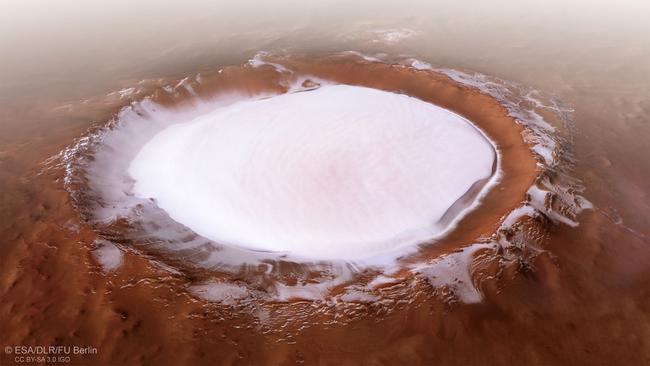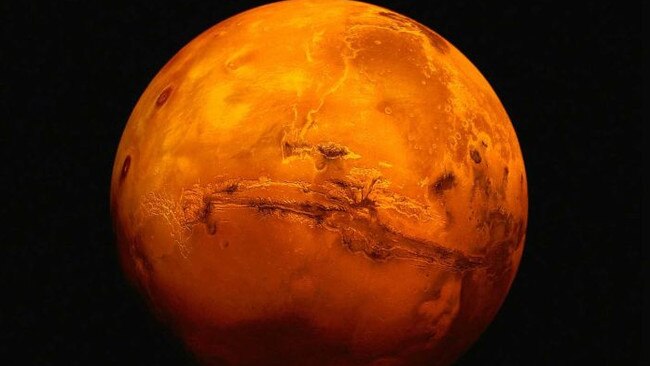Chinese rover finds evidence of beaches on Mars
Mars may once have been home to sun-soaked ‘vacation-style beaches’ with lapping waves and gentle breezes, newly collected data shows.

Mars may once have been home to sun-soaked “vacation-style beaches” with lapping waves and gentle breezes, according to new data collected by a Chinese rover.
Using the rover’s ground-penetrating radar, scientists identified layers of rock hidden beneath the planet’s surface. The results suggest that a now-vanished ocean was once fringed by a sandy shore.
Professor Benjamin Cardenas of Pennsylvania State University, a co- author of the study, said: “We found evidence for wind, waves, no shortage of sand – a proper, vacation-style beach.”
He added: “Shorelines are great locations to look for evidence of past life. It’s thought that the earliest life on Earth began at locations like this, near the interface of air and shallow water.”

The data comes from China’s Zhurong rover, which landed on the Utopia Planitia region of Mars in 2021 and was operational for a year. It travelled 1.2 miles (1.9km), roughly at a right angle, to escarpments thought to be the remnants of a shoreline that existed about 4 billion years ago, when Mars, which is now cold and arid, had a thicker atmosphere and a warmer climate.
Its radar explored to a depth of about 80m, revealing thick layers of sloping rock. These pointed up towards the putative shoreline at an angle of about 15 degrees, making them very similar to beach deposits on Earth.

According to the study’s Chinese and American authors, the readings imply that a large, ice-free ocean once existed on a planet that is now too cold for liquid water to flow. They believe rivers carried sediment to the ocean, which was then distributed by waves along its beaches over millions of years. The radar was also able to determine the size of the particles locked inside the rock layers, which matched that of sand.
Professor Michael Manga of the University of California, Berkeley, a co-author of the paper, said: “These features have both the right orientation and the right slope to support the idea there was an ocean for a long period of time to accumulate the sand-like beach.”
Images taken by the Viking spacecraft in the 1970s fuelled speculation that Mars once had an ocean. The pictures showed what looked like a shoreline around a large portion of the northern hemisphere and a depression that could be an ancient seabed.

However, the shoreline was irregular, varying in height by up to 10km. This cast doubt on the ocean theory, as one would expect a shoreline to be level. There was also the question of where the water had gone. Scientists now believe much of it may have escaped to space along with Mars’ atmosphere as the planet cooled, and that a substantial amount probably travelled underground, where it remains trapped as ice or combined with rocks to form new minerals. Manga and his team believe the uneven shoreline can be explained by a vast volcanic region of Mars, called Tharsis, which contains our solar system’s largest volcanoes.

The so-called “Tharsis bulge” is an area where the planet’s surface has risen up. Computer modelling suggests that this distorted shape would have altered the planet’s rotation, starting 4 billion years ago. “Because the spin axis of Mars has changed, the shape of Mars has changed. And so what used to be flat is no longer flat,” he said.
The new findings have been published in the journal Proceedings of the National Academy of Sciences.
The Times





To join the conversation, please log in. Don't have an account? Register
Join the conversation, you are commenting as Logout